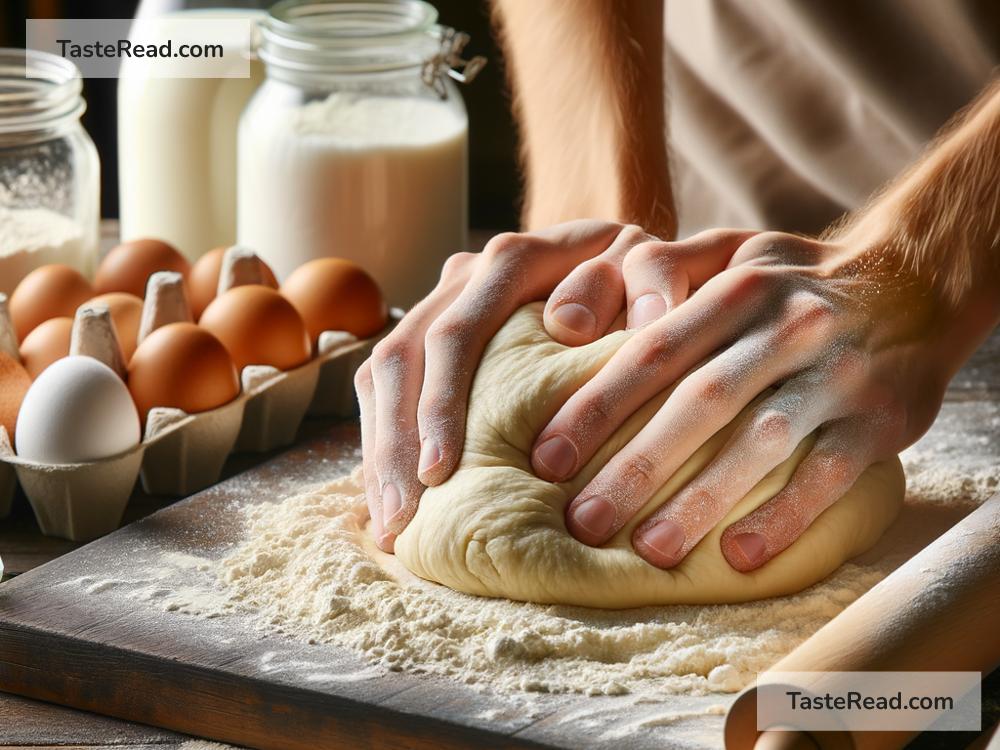The Science of Yeast Fermentation in Baking
Baking is not just a culinary art—it’s also a science. One of the most fascinating aspects of baking is yeast fermentation, a magical process that transforms simple ingredients into delicious bread, rolls, and pastries. If you’ve ever wondered what’s happening inside your dough while it rises, this article will help you understand the science behind yeast fermentation in simple terms.
What Is Yeast?
Yeast is a tiny living organism, a single-celled fungus, that plays a big role in baking. The most common type of yeast used in breads is Saccharomyces cerevisiae. Though microscopic in size, yeast has incredible powers to transform dough by eating sugar, producing gas, and imparting flavor.
You can buy yeast in different forms, such as active dry yeast, instant yeast, or fresh yeast, but they all work in similar ways when you use them in your recipes.
What Is Fermentation?
Fermentation, in the context of baking, is the process where yeast consumes sugar and converts it into carbon dioxide gas, alcohol, and other compounds. Yeast fermentation is what makes bread rise, giving it a soft and airy texture. It’s also responsible for producing the delicious flavors and aromas that you associate with freshly baked goods.
Think of yeast as tiny workers in your dough. When you give them the right conditions—food (sugar), moisture, and warmth—they get to work creating all the things that make bread so special.
How Does Yeast Fermentation Work?
Let’s break down the process step-by-step:
-
Yeast Eating Sugar
Yeast needs food to survive. In dough, it finds sugar, either from the sweeteners you add (like sugar, honey, or molasses) or from the natural sugars in flour. Flour contains starch, which breaks down into simple sugars during kneading, giving yeast plenty to eat. -
Production of Carbon Dioxide
As yeast consumes sugar, it produces carbon dioxide (CO₂) gas and alcohol as byproducts. This gas is what causes your dough to rise. The carbon dioxide gets trapped in the elastic web of gluten in the dough, forming tiny air pockets. These air pockets expand during fermentation and baking, making your bread light and fluffy. -
Flavor Creation
Beyond creating gas, yeast fermentation contributes to the flavor of bread. As yeast breaks down sugars, it produces organic acids and alcohol, which add complexity to the taste. The longer your dough ferments, the more pronounced these flavors will become.
The Importance of Kneading and Gluten
For yeast fermentation to work properly, the dough needs to have structure—and that’s where gluten comes in. Gluten is a stretchy protein found in wheat flour. When you knead dough, you help develop gluten, which creates an elastic network capable of trapping the carbon dioxide gas produced during fermentation. Without gluten, the gas would escape, and your bread wouldn’t rise.
Kneading also distributes the yeast evenly throughout the dough, so it can work its magic in every nook and cranny.
The Role of Temperature
Yeast is sensitive to temperature, and this affects how fast or slow the fermentation process happens.
- Warm temperatures (around 75–78°F/24–26°C): Yeast works faster, causing quick fermentation. This is ideal for recipes that require a short proofing time.
- Cool temperatures (below 50°F/10°C): Yeast activity slows down, leading to slow fermentation. This is often used in recipes for artisanal breads to develop deeper flavors and textures.
- Hot temperatures (above 140°F/60°C): Yeast starts to die. For this reason, it’s important not to expose yeast or dough to extreme heat before baking.
Proofing: Letting Dough Rise
Proofing is the term used for the resting period when dough is allowed to ferment. During this time, the yeast consumes sugar and produces gas, causing the dough to expand.
Most yeast doughs go through one or two proofing stages. The first proof happens right after mixing the dough, while the second proof happens after shaping it into loaves or rolls. Proofing gives the gluten time to relax and allows the yeast to create more air bubbles for improved texture.
Artisanal Techniques: Long Fermentation
Many artisan bakers use long, slow fermentation to produce bread with exceptional flavors and textures. By refrigerating the dough and letting the yeast work more slowly, bakers allow complex flavors to develop over time. This is why sourdough bread, which ferments for hours or even days, tastes so rich and unique.
What Happens in the Oven? The Final Stage
When you put your dough into the oven, the yeast goes through one last burst of activity called the “oven spring.” The heat from the oven causes the yeast to work rapidly, producing CO₂ gas until it eventually dies around 140°F (60°C). At this point, the alcohol and organic compounds produced during fermentation evaporate, leaving behind delicious flavors baked into the bread. The gluten hardens, and the air pockets set, creating the final structure of your loaf.
Troubleshooting Yeast Issues
If your bread doesn’t rise, it’s often due to problems with yeast. Here are some common mistakes and how to avoid them:
– Dead yeast: Always check that your yeast is active by proofing it in warm water with a bit of sugar before using it.
– Wrong temperature: Ensure your water isn’t too hot or too cold when mixing your dough. Lukewarm water is ideal.
– Not enough time: Fermentation takes patience! Let your dough rise fully before baking.
Conclusion
Yeast fermentation is at the heart of great baking. By understanding how yeast works and the factors that affect fermentation, you can take your baking to the next level. Whether you’re crafting a quick loaf of sandwich bread or experimenting with a slow-fermented sourdough, remember that yeast is your tiny but powerful helper, creating magic in every bite.


